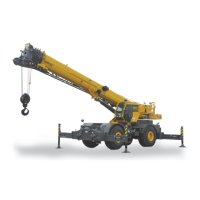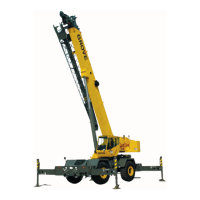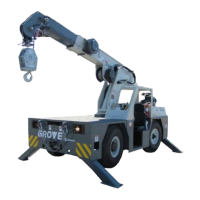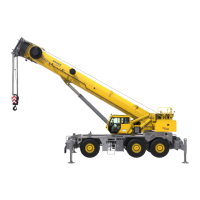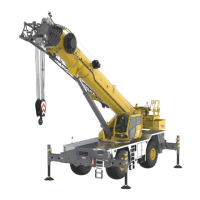HYDRAULIC SYSTEM TMS700E SERVICE MANUAL
2-68 Published 01-29-2015, Control # 512-01
3. Remove the two wear rings and seal from the outside of
the piston.
NOTE: Arranging discarded seals and rings in the order of
disassembly will aid in installation of new seals and
rings. Pay attention to how each seal and ring is
installed to avoid installing replacement seals and
rings improperly.
4. Loosen and remove the locknut securing the piston.
Remove the piston from the rod.
5. Remove the O-ring from the inside of the piston.
6. Remove the spacer from the rod.
7. Remove the head from the rod.
8. Remove the O-ring, backup ring and retaining ring from
the outside of the head. Remove the seal and wiper ring
from the inside of the head.
Inspection
1. Inspect the rod. There should be no scratches or pits
deep enough to catch the fingernail. Pits that go to the
base metal are unacceptable. Chrome should be
present over the entire surface of the rod. If lack of
chrome on rod, the rod should be replaced.
2. Inspect rod for straightness. Determine if it can be
straightened or must be replaced.
3. Inspect the head. Visually inspect the inside bore for
scratching or polishing. Deep scratches are
unacceptable. Polishing indicates uneven loading, and
the bore should be checked for out-of-roundness.
4. Inspect the piston. Visually inspect the outside surface
for scratches or polishing. Deep scratches are
unacceptable. Polishing indicates uneven loading, and
the diameter should be checked for out-of-roundness.
5. Inspect the barrel carefully for scoring. If barrel is
scored, it must be repaired or replaced.
6. Thoroughly rinse parts, allow to drain, and wipe with a
lint-free rag. Inspect all parts for serviceability.
7. Stone out minor blemishes and polish with a fine crocus
cloth.
8. Clean with solvent and dry with compressed air any
parts that have been stoned and polished.
CAUTION
When removing seals and rings, avoid scratching the
grooved and gland surfaces.
CAUTION
Before installing new seals and rings, clean all surfaces
and carefully remove burrs and nicks. Parts displaying
excessive wear or damage should be replaced.
Reference Only

